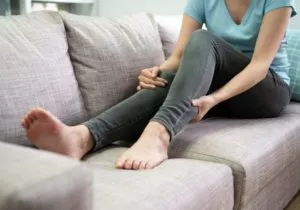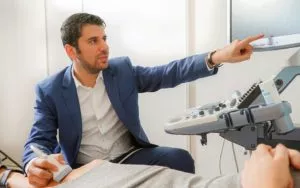Many patients come to see us at The Vein Institute complaining about chronic leg pain. Upon examination, we often find that their legs are covered with varicose veins. But when we ask, “Have you ever considered the possibility that varicose veins may be the cause of your leg pain?” the answers is always the same:
“That can’t be. Varicose veins are just a cosmetic problem, right? Sure, they make my legs look bad, and might keep me from wearing shorts like I used to, but it’s not as if they could do any damage, except to my self-esteem, right?”
Wrong. Believe it or not, varicose veins are one of the most common causes of leg pain. In some cases, they can be more than just a cosmetic issue. Sometimes they are not even visible. Let’s explain why that is, what you can do to alleviate the pain or eliminate the swollen veins entirely.
Why Varicose Veins can Become Painful?
Varicose veins are caused by a condition called chronic venous insufficiency, which causes the tiny, one-way valves inside the veins to malfunction. These valves stop closing properly, which allows blood to flow “backwards” back into the veins, and stagnate there. This causes the affected veins to swell, impairs blood flow and deprives the veins, and the tissues surrounding them of the oxygen and the nutrients they need to stay healthy. Impaired circulation can cause leg tissue to become inflamed, which activates the pain receptors and causes pain.
The types of pain commonly caused by untreated varicose veins include:
- Aching, throbbing discomfort or burning sensations in one or both legs.
- Pain in the legs that becomes worse after standing or sitting too long.
- Pain when walking or exercising, sometimes resulting in muscle cramps.
- Feelings of heaviness or weakness in the legs, even after rest.
- Itching along the surface of the veins that are so strong that it becomes painful.
- Restless Leg Syndrome, constantly feeling that you have to move your legs to find relief.

What You Can Do to Alleviate this Pain Temporarily?
If your doctors find that there IS a link between your varicose veins and the leg pain you’ve been experiencing, there are things you can do to help alleviate it:
- Regularly elevate your legs, several times a day for 30 minutes each session.
- As counter-intuitive as it may sound, walk more. Regular walking can reduce pain.
- If you are overweight, lose weight.
- If you smoke, STOP.
- Wear compression stockings to reduce swelling and improve circulation.
- Finally, consider more permanent solutions – eliminate the pain caused by varicose veins by eliminating the varicose veins themselves.
Modern Varicose Vein Removal is Fast, Effective, and Surgery-free
The procedures used to treat varicose veins at The Vein Institute are minimally invasive, meaning that no surgery or general anaesthesia is required. The treatments are fast so that you can have your varicose veins treated on your lunch break and gentle so that you can return home or to work afterwards.
So if you’re tired of living with leg pain, spend some time reading about the many treatment options we offer – ultrasound-guided sclerotherapy, endovenous laser ablation, radiofrequency ablation, and Venaseal™ medical superglue.

Or just give the experts at The Vein Institute a call at 1300 535 017 and we’ll be happy to schedule a full examination and suggest the best options for your particular needs.

